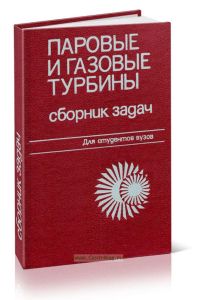- Артикул:00-01009589
- Автор: Taylor J. W.R.
- ISBN: 1-85170-347-0
- Обложка: Суперобложка
- Издательство: Studio Editions (все книги издательства)
- Город: London
- Страниц: 320
- Год: 1995
- Вес: 1640 г
Jane's Fighting aircraft of World war I
JANE’S All the World’s Aircraft was only five years old when the First World War began. It had already established such a reputation for authenticity that its Founder/Editor, Fred T. Jane, feared that the 1914 edition might be of assistance to Britain’s enemies. It was not practicable to scrap the work already done and, in a reasonable period of time, restart page make-up and printing. So, when purchasers opened the book they discovered that pages in the British section that should have carried large illustrations of aeroplanes and airships in service with the Royal Flying Corp and Royal Naval Air Services were sometimes almost entirely obliterated by rectangles of solid black ink.
In a Special Note above his Preface, Jane wrote “On account of the general European War it has been decvided to publish the first edition of this book a month earlier than was originally anticipated. This means that the Italian and United States pages have to go to press imperfectly brought to date. On the other hand, though certain details which would otherwise have appeared are necessarily lacking, the matter collected concerning the principal belligerants is of such a nature that immediate publication seems desirable and to justify the unfinished state of the British pages, from which, for obvious reasons, a good deal has been deliberately deleted.”
We shall never know whether the purpose was simply to deny the enemy information or aircraft that some considered to be world-beaters. But Jane could hardly have foreseen that types such as the RFC’s B.E.2c, poorly armed and with the emphasis on stability for reconnaissance, would be almost cleared from the sky over the Western Front in France when the Germans introduced their Fokker Eindecker (monoplane), with a forward-firing machine-gun, in the Summer of 1915.
From that time, combat aircraft developed at an astonishing pace. By the end of the war, in 1918, successive generations of single-seat fighters had progressed from having engines capable of producing 80 hp on a good day to engines giving a reliable 200 hp or more. Speeds increased in consequence from 82 mph to nearly 150 mph. Twin forward-firing machine-guns became the normal armament, with up to four guns on some aircraft such as the Sopwith Dolphin.
It is surprising to realise, long afterwards, that the so-called “Fokker scourge” of 1915-16 was accomplished in only ten months by aircraft that weighed only 1,400 lb fully loaded, and of which only some 423 were built. In contrast, nearly 5,500 British Sopwith Camels were produced, and they shot down 1,294 enemy aircraft — more than any other Allied or enemy type — in dogfights that were often decided by their extreme manoeuvrability.
Unlike the present day, when many types of military aircraft remain in first-line service for 20, 30, or more years, some of the best-known types of the 1914-18 period operated for only a year or 18 months before being replaced by something better. As a result, they had long disappeared from assembly factories and from the inventory of squadrons fighting in France when the late Fred Jane’s successor, C. G. Grey, compiled the 1919 edition of All the World’s Aircraft that forms the basis of this book.
To provide readers with a more comprehensive record of the aircraft that fought aviation’s first great war, the compiler of Jane’s Fighting Aircraft of World War I has supplemented the 1919 material by extracting entries on significant military aircraft from the 1914, 1916, 1917 and 1918 editions (there was none in 1915). Civilian types have been omitted as irrelevant to this volume.
It has to be remembered that in wartime it is seldom possible to describe in full detail the structures, dimensions, weights, performance and armament of contemporary aircraft built by manufacturers on one’s own side. Even the 1919 edition of All the World’s Aircraft was compiled partly during the still-desperate closing months of the conflict, with some updating after it ended. So, the descriptions of individual aircraft in this book are, for the most part, based on reports and studies of German aircraft that had been captured (often in a damaged state) by the Allies, and vice versa. They are of considerable historical interest and, although they could not include all the facts and figures that became available later, they provide some of the most detailed descriptions of important aircraft that have ever appeared in any reference book.
In retrospect, it can be seen that the four years and three months of the First World War represented the most significant period in the entire history of aerial warfare.
CONTENTS.
FOREWORD
PREFACE
PART A.
AIRCRAFT IN THE WAR (By Major W. E. De. B. Whittaker)
ARGENTINE
AUSTRALIAN
AUSTRO-HUNGARY
BELGIAN
BOLIVIAN
BRAZILIAN
BRITISH
BULGARIAN
CANADIAN
CENTRAL AMERICAN REPUBLICAN
CHILIAN
CHINESE
DANISH
DUTCH 1
french 1
GERMAN GREEK INDIAN ITALIAN
JAPANESE MEXICAN NEW ZEALAND
NORWEGIAN PERUVIAN
PORTUGUESE
ROMANIA
RUSSIAN
SERVIAN
SIAMESE
SOUTH AFRICAN
SPANISH
SWEDISH
SWISS
TURKISH
URUGUAYAN
UNITED STATES
PART B
ALL THE WORLD’S AERO-ENGINES
Рекомендуем



